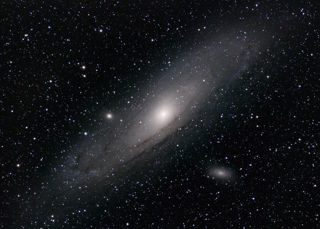
Long Duration Exposure Facility Flown Panel
Long Duration Exposure Facility Flown Panel
This graphite polyimide laminate sheet was flown on NASA's Long Duration Exposure Facility (LDEF) experiment. It highlights the dangers of micrometeoroid strikes on spacecraft whilst in low Earth orbit. This panel was one of many exposed to the harsh space environment. The various holes and shockwaves in the panel have been caused by micrometeoroids - small pieces of rock or metal, travelling at incredibly high speeds in respect to spacecraft orbiting Earth. Although travelling at many kilometres a second, when these microscopic particles hit the panel they slowed down and the resultant heating effect created plasma balls with temperatures of many thousands of degrees centigrade. Although the grains responsible were far too small to be visible to the human eye, their tremendous kinetic energy created the holes and shockwave patterns you can see on the surface.It is inevitable that spacecraft will be struck by micrometeoroids and therefore NASA and other space agencies have done a lot of work on how to best protect vehicles and satellites in orbit. In 1984 NASA gave scientists around the world an opportunity to study the effect of space vehicles spending long periods in space with their LDEF experiment.
LDEF was placed in orbit by the Space Shuttle Challenger for a planned eleven months. The large tube-like structure was covered in 86 trays, inside of which were placed an array of 57 science experiments. These experiments were designed to measure the effect of long duration exposure on various space building materials and component parts, allowing scientists to see what radiation, extreme temperature changes, and collisions with micrometeoroids had. Once LDEF was returned to Earth the experiments were shared with institutions around the world, allowing leading experts to know the reality of leaving objects in space for a long period of time.
Although only intended to be in space for eleven months, the actual retrieval of LDEF didn't happen until January 1990 - due to a series of delays. It was finally retrieved by the crew of Space Shuttle Columbia on mission STS-32. Bonnie Dunbar brought LDEF into Columbia's payload bay with the help of the Remote Manipulator System (also known as the Canadarm). Safely protected inside the Shuttle, it returned to Earth for study as one of NASA's most successful ever science missions.
All images:
-
![Long Duration Exposure Facility Flown Panel]()
Long Duration Exposure Facility Flown Panel -
![Long Duration Exposure Facility Flown Panel - the small holes and shockwaves caused by colliding micrometeoroids can clearly be seen]()
Long Duration Exposure Facility Flown Panel - the small holes and shockwaves caused by colliding micrometeoroids can clearly be seen -
![Long Duration Exposure Facility Flown Panel]()
Long Duration Exposure Facility Flown Panel -
![Long Duration Exposure Facility Flown Panel]()
Long Duration Exposure Facility Flown Panel -
![LDEF as seen through Space Shuttle Columbia's window before it was retrieved - Credit: NASA S32-41-008]()
LDEF as seen through Space Shuttle Columbia's window before it was retrieved - Credit: NASA S32-41-008 -
![LDEF being picked up by Space Shuttle Columbia's Canadarm, under Bonnie Dunbar's operation - Credit: NASA]()
LDEF being picked up by Space Shuttle Columbia's Canadarm, under Bonnie Dunbar's operation - Credit: NASA -
![LDEF in orbit - Credit: NASA S32-77-58]()
LDEF in orbit - Credit: NASA S32-77-58 -
![LDEF being removed from the cargo bay of Space Shuttle Columbia in 1990 - Credit: NASA]()
LDEF being removed from the cargo bay of Space Shuttle Columbia in 1990 - Credit: NASA
More information
Object number
L2000-6
Location
Space Academy Science Lab
Has this object been into space?
Yes
Dimension - Dimension, Value, Measurement unit
Depth: 0.01cm
Height: 44.5cm
Width: 94.5cm
Material
Graphite polyimide laminate
Object Production Date
1983
Object Production Organisation
National Aeronautics and Space Administration
Object Production Place
Virginia
Hampton
NASA Langley Research Center
United States
Credit Line
On loan from the Open University School of Physical Sciences
On Display Status
Not on display
Copyright and Photos
Photography is shared via the license below.
However, some objects on this website are on loan to the National Space Centre and are being shared through the permission of their owners.
Commercial use of images from this website is not allowed without additional permissions being granted. To request permission to use images for purposes not covered in the license below, please contact [email protected]
Individual objects on loan to the National Space Centre may have additional copyright permissions, so advice should always be sought before use.
![]()
This work is licensed under a Creative Commons Attribution-NonCommercial 4.0 International License.









